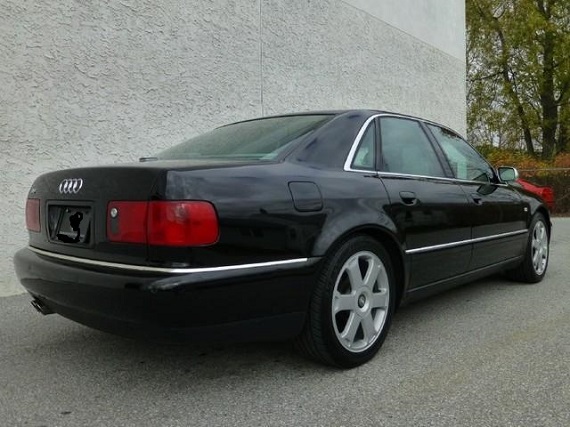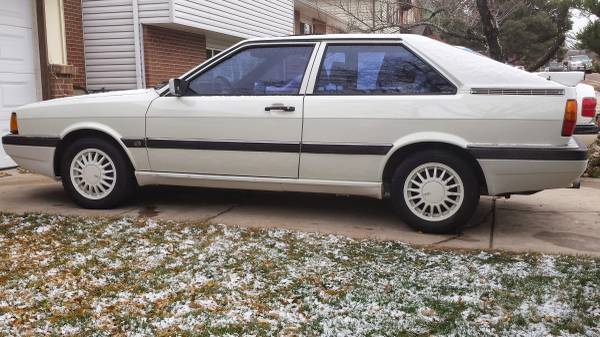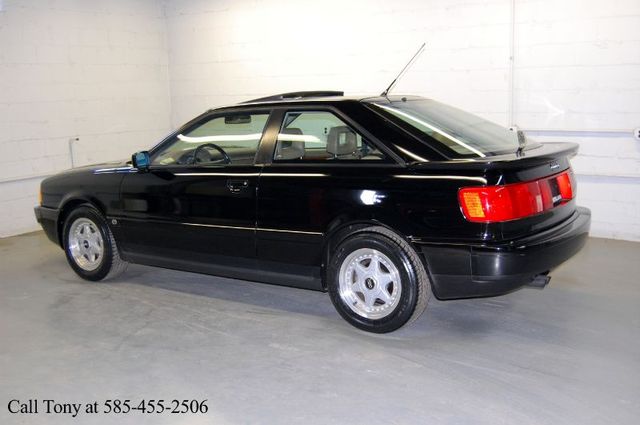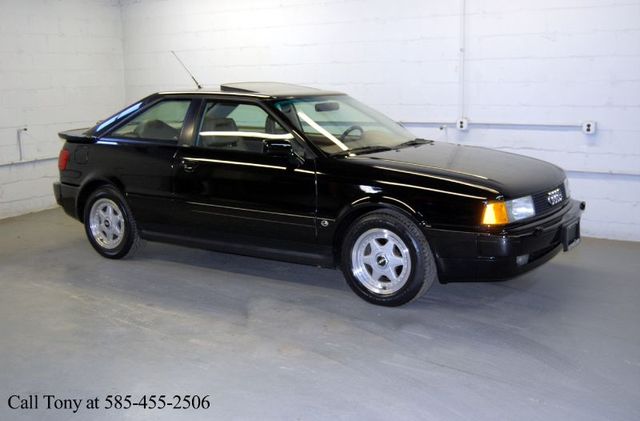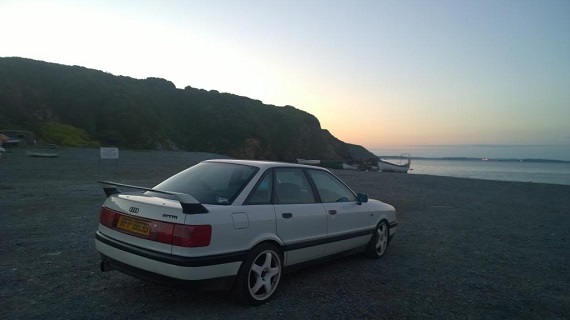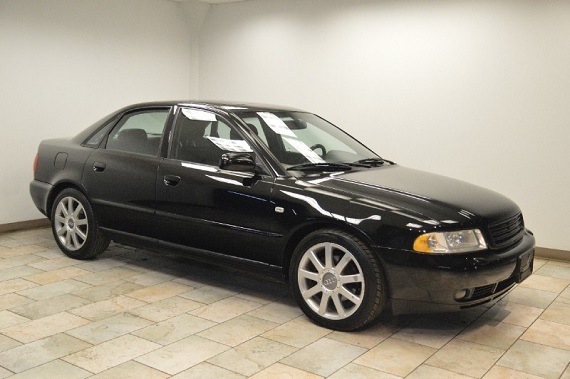In last week’s 10K Practical Performance Edition, a question arose of what was the best ‘Bahn burner for under $15,000. My immediate answer was the Audi S8. It might not be as powerful as the E39 M5 or a slew of Mercs that are available for around the same amount, but the combination of the all-aluminum engine and space frame gives the large executive a smaller feel on the road – and with 360 horsepower, it’s no slouch. It’s also got a great all-wheel drive system; quattro purists don’t love the electronic differentials, but truth told on the fly they work reasonably well and you don’t have to muss and fuss. This isn’t a rally car, anyway. But it is a great looker – the interior and exterior are a beautiful combination of style and presence that few others match. There just aren’t any awkward angles on the D2 in my mind. So, today I’ve rounded up a few examples with the help of our reader, John. Ranging from a first run 6-speed through a last of the D2 2003 model, which would be your color?
Tag: Quattro
For me, it’s been a week of some unappreciated cars, and the Audi Coupe Quattro ranks up there as one of the most unappreciated Audis. But unlike the wild turbocharged wonders that were available in the rest of the world, the U.S. market received only the 7A inline-5 20 valve motor. Basically, it was a 16V Volkswagen motor with one more cylinder; with a 7,200 rpm redline, the sonorous 5-pot put out a respectable 164 horsepower. That wasn’t much less than the E30 M3 had and matched U.S. bound turbocharged Quattros – but the power delivery was such that the car didn’t feel fast off the line, and the weight didn’t help. The B3 was hefty, saddled with improved safety options like PROCON-10, anti-lock brakes and a stronger platform, it was also decidedly more luxury oriented with electric seats, sunroof, windows, air conditioning and even an electronic lock for the differential in the rear. It was the 1980s Audis all grown up, but the impression left in many enthusiast’s mouths was that it was a bit soft and a bit slow. Ironically, the 7A even gained a bad reputation amongst enthusiasts as an underpowered unit that lacked torque – but a look at the original power numbers prove it was the most powerful of the non-turbo, non-V8 cars Audi offered at the time. 1992 would see a switch to the B4 platform with the V6 power unit and the end of B3 production; slow sales and a high price meant the Coupe Quattro was removed from the U.S. bound lineup after only a reported 1,500 made it here. Despite their perceived lack of sport, the legendarily stout Coupe Quattros served many of their owners well and many are still kicking around. Only one, though, is in the condition of today’s example:
CLICK FOR DETAILS: 1991 Audi Coupe Quattro at Sutherland Auto Sales
12 CommentsIn the realm of German cars, Audi seems to be the unappreciated marque when you go back a few generations. But even then, amongst the leper colony of Audi products that no one wants, the Audi 80 quattro is close to King. I say close to King, because truth be told I think there are even less appreciated products from this time – the front drive Audi 100, for example. But go to 1991, and within Audi all enthusiasts are generally interested in is the 200 20V quattro, the Coupe quattro, and occasionally someone will mention the V8 quattro 5-speed. The 80 quattro, though, was one of the smartest options if you wanted a robust, small all-wheel drive sedan. True, the switch from B2 to B3 gained a fair amount of weight and not much more power from the NG 2.3 liter inline-5. It felt, if anything, a bit slower off the line than the 4000 quattro had been – a car not noted for it’s straight line dominance. But its unpopularity ironically made it quite popular as a tuning platform; after all, it does share some DNA with the much loved RS2. In this case, the builder of this car has thoroughly upgraded this B3 to new levels of power and performance:
CLICK FOR DETAILS: 1991 Audi 80 quattro on Classic-Audi.co.uk
1 CommentAudi loves to do things outside of the norm, and one of the odd things that they seem to do is to upgrade a car and then immediately discontinue it. Why they do this is beyond my level of comprehension, but it means that if you know what you’re looking for you can get a slightly more special version of the car you’re after. These half year models, known as the “.5″s, aren’t always the same – nor are they always well documented. The first I can think of is the 1987.5 Coupe GT; also dubbed the “Special Build”, it featured some serious upgrades including a larger 2.3 liter inline-5, 4-wheel disc brakes and a few trim differences from other GTs. Arguably, they’re the most highly sought after GTs with only a few hundred still kicking around. The same goes for the 1995.5 S6; minor trim and some mechanical changes, such as the change from a mechanical locking rear differential to the newer electronic system Audi would use in newer cars. But it didn’t end there, as in 2001 Audi upgraded the outgoing B5 A4 to 2001.5 specs. The changes were subtle; the A4 already had a refreshed front and rear lights in 1999, so you had to look underneath to find the reinforced front strut housings and changed ECUs. While the S4 didn’t exhibit any exterior differences, though, the A4 Sport package was different. Launched in 1999, the Sport package A4s initially had Ronal made “Swing” 7 spoke wheels that were replaced in 2001 by Speedline-made 7 spoke wheels that had a more square design and a center lug cover. But the 2001.5 models gained the “Celebration Package” as well, featuring 17″ wheels for the first time on the regular A4. It was, for all intents and purposes, the beginning of what would become the “Ultrasport” package on the B6 A4 in 2002. The “Celebration” wheels, as on the A6 2.7T and S8, mimic the RS4 design and became a signature wheel for the early 2000s Audis:
